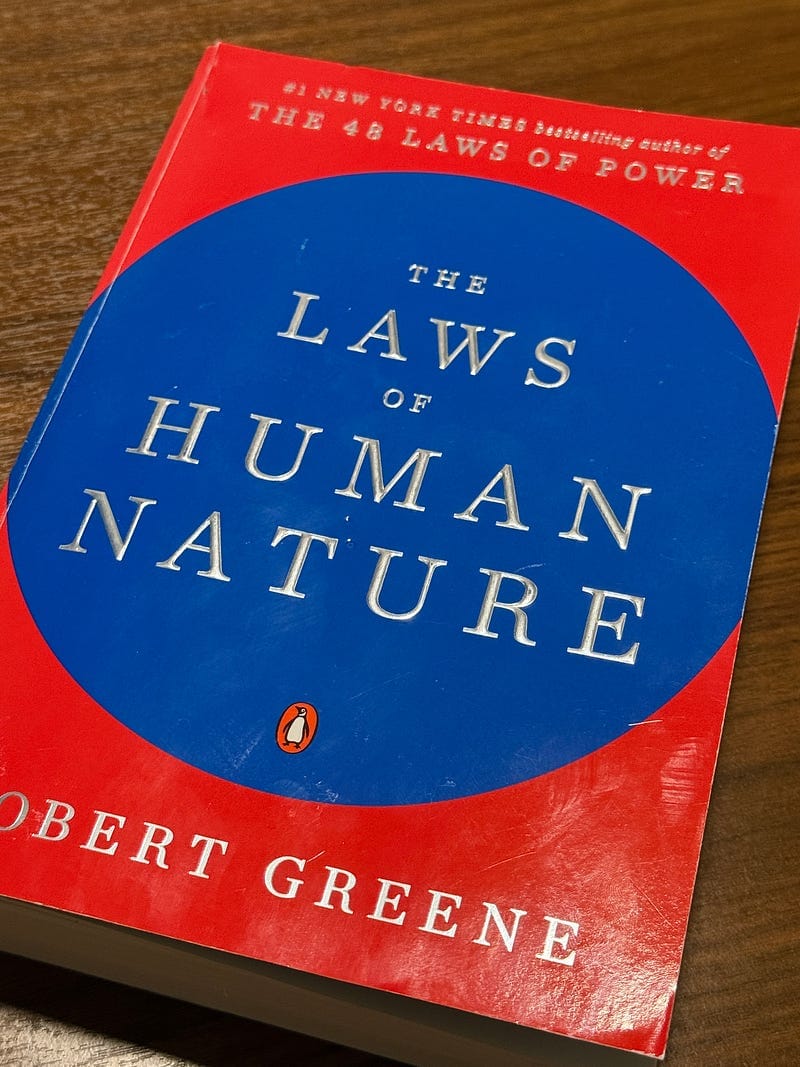
How to Keep Them from Torching Your Day

Your brain flares before it thinks. Learn a three-step drill that turns knee-jerk anger into calm, deliberate action.
Inbox Rage, Windshield Yells, Same Old Story
You pop open an email. Heat surges up your neck. Fingers hammer a reply you know you will regret. Later, stuck in traffic, a driver cuts you off. You roar at an empty windshield. The pattern is so quick it feels automatic.
Robert Greene starts The Laws of Human Nature with the same ugly truth: emotion outruns reason. Call it the Law of Irrationality. Unless we train another response, the feeling in the gut hijacks the steering wheel upstairs.
During a rough sprint years ago, I learned this the hard way. A junior flagged a flaw in my code review. My pride bristled, I slapped back a sarcastic comment, and morale cratered for a week. One line of text, seven days of damage. I needed better reflexes.
You are largely unaware of how deeply your emotions dominate you.
The Pericles Move
Athens, 432 BC. Sparta’s envoys deliver an ultimatum. Citizens chant for war. Pericles steps onto the bema and speaks with icy restraint. No heroic charge, just cool arithmetic: fight on land now, and Athens loses. Delay, fight at sea, Athens wins. The mob grumbles yet listens. His composure saves the city.
Greene’s point: we all carry an “inner Athena”, a wiser self that can step in before the crowd inside our skulls storms the gates. The trick is building that habit.
We Feel Before We Think
Neuroscience backs what the ancients guessed. Signals hit the amygdala milliseconds before the prefrontal cortex. You feel, then you frame a story to justify the feeling. Marketing exploits it, politics profits from it, and personal conflicts feed on it.
Greene’s blunt tally stays under the fair-use line:
“You are largely unaware of how deeply your emotions dominate you.”
Accept that sentence, and you gain radar. Deny it and you fly blind.
Six Biases that Blindside Us
Confirmation
We hunt data that applauds us and skip data that contradicts us. Think of cherry-picking Stack Overflow answers that fit our hunch.
Conviction
Volume of certainty masquerades as proof. Loud ≠ true.
Appearance
We trust polished. Confident posture, crisp slide deck, we nod along before substance lands.
Group
Tribe tunes thought. Step into a forum, Slack channel, or partisan thread—watch your opinions tilt to match the feed.
Superiority
We rate ourselves better than average at driving, coding, and staying objective. Statistically absurd, psychologically comfy.
Blame
When things break, the fault lies elsewhere. Egos love a scapegoat; growth starts when you yank the blame back home.
Spotting the bias in real time feels awkward. That awkward twinge is the cost of choosing clarity over ego.
Five Triggers That Pour Gasoline
- Old wounds
Criticism that echoes childhood slights revives the original pain at full volume - Sudden swings
Surprise wins make us reckless, surprise losses make us fatalistic. - High pressure
Deadlines, public scrutiny — cortisol narrows focus to survival. - Button-pushers
Certain people jab exactly where we are thin-skinned. - Crowd fever
Emotions scale in groups; reason shrinks.
Map yours. Mine: sleepless nights, public doubt of my competence, and any whiff of betrayal. Knowing the list lets me watch for early smoke.
Training the Inner Athena
Step 1: Stretch the Pause
Build a micro-distance between flash and action. Three breaths, a walk to the pantry, a draft email that never ships. Reaction time is a muscle; work it daily.
Step 2: Name the Feeling, Trace the Wire
Say it plainly: “I feel disrespected because feedback stings my pride.” Labeling shunts activity from limbic circuits to language centers, cooling the charge.
Step 3: Run the Double Lens
Lens One — Skepticism
What if my first interpretation is wrong? Which bias might be steering it?
Lens two — Curiosity
What else could explain their behavior? What am I missing?
Together, they keep you sharp without turning cynical.
Step 4: Accept People as Weather
Storms rage, sunshine returns, neither is about you. When a manager barks or a friend ghosts, note the forecast, adjust plans, and skip the melodrama of taking it personally.
Step 5: Celebrate Clarity
Each time you stay composed under fire, mark it. Tiny dopamine hit. Over time, you start chasing the high of calm instead of the sugar rush of outrage.
Quick Drills You Can Start Today
Two-Minute Victory Log
Every night, jot down one moment you stayed level-headed. Micro-recognition solidifies the trait.
Bias Bingo
Pick a bias for the week. Track every time it appears in your thoughts. Gamified awareness works.
Trigger Shield
If a known trigger looms (big demo, family dinner), schedule pre- and post-cool-down slots. Guardrails beat willpower.
Empathy Intervals
Once a day, ask someone a question, then listen until they pause twice. Builds the outward gaze that starves narcissism.
Cold Commentary Rule
Angry comment or email? Write it, save the draft, sleep. Morning-you will thank night-you.
Personal Check-in
Last month, a freelance client rejected a deliverable I had sweated over. Old me would have defended every line. Pause, label, double lens. I spotted superiority bias (“my code is flawless”) and blame bias (“they moved the goalposts”). After cooling off, I scheduled a call, asked for specifics, and learned their user persona had shifted mid-cycle. We adjusted the scope, relationship remains intact. Thirty minutes of calm beat thirty hours of silent resentment.
Progress, not perfection — but measurable.
Additional Reading & Resources
If you found the insights from The Laws of Human Nature helpful and want to explore further, here are some curated books and resources that expand on mastering your emotions and understanding irrational behavior:
- Thinking, Fast and Slow by Daniel Kahneman: The science behind the fast-feeling / slow-thinking split.
- Emotional Agility by Susan David: Concrete drills for moving through feelings instead of around them.
- Meditations by Marcus Aurelius: One-page-a-morning stoic fuel.
Enjoyed this piece?
If this piece was helpful or resonated with you, you can support my work by buying me a Coffee!

Become a subscriber receive the latest updates in your inbox.






Member discussion